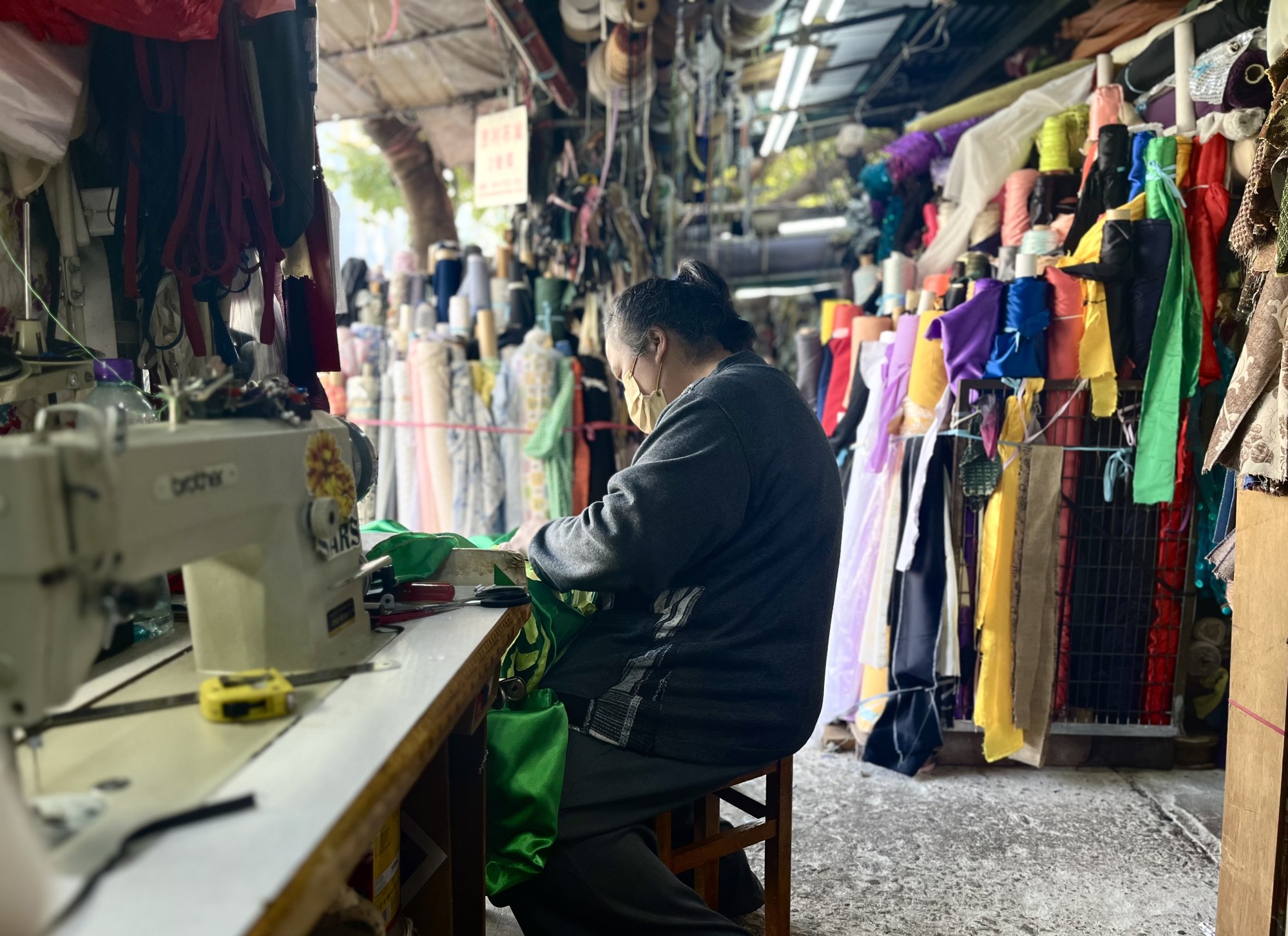
04:15
End of an era: Hong Kong’s oldest outdoor fabric market to be torn down
End of an era: break in fabric of Hong Kong as city mourns impending closure of historic 44-year-old textile hawker market
- Once an emblem of city’s status as global production powerhouse, closure of decades-old Kowloon fabric market marks end of an era
- Established in 1978, the old-style bazaar is Hong Kong’s oldest operating outdoor fabric market
Hong Kong fabric seller Chan Yu-tung has mixed feelings about the impending closure of the historic Yen Chow Street Hawker Bazaar in the Sham Shui Po district of the city’s Kowloon peninsula.
The youthful-looking 90-year-old has peddled his wares sold there for more than 40 years and will miss market life despite looking forward to a restful retirement. “I want to spend more time with my family.”
Established in 1978, it is Hong Kong’s oldest operating outdoor fabric market.
But the wrecking ball looms: It will be demolished to make way for a public housing development despite numerous attempts from concern groups and hawkers to preserve it.

In the good old days, Chan said the market bristled with shoppers from hobby sewers to design students and fashion designers.
The walls of his cubicle are covered with photos, some from magazines he has featured in. “A couple of years ago I was interviewed by a television crew from the Czech Republic,” he said.
Like Chan, some vendors will retire. Others will relocate to a smaller more modern space nearby.
To relocate, vendors were offered up to HK$35,000 or HK$100,000 (US$12,800) in ex-gratia payments to return the stalls to the government.

Margaret Li has worked in the market for 35 years. The 64-year-old won’t relocate but plans to focus on her sewing business.
“The new space is too small … there’s not enough room to display fabric,” she said.
Today Li is putting the finishing touches to a Chinese New Year outfit for a dog, a special request from a client, “I’ll miss talking to customers and sharing sewing tips.”
In a city where finance and technology dominate the economic landscape, it is easy to forget the role the textile industry has played in shaping Hong Kong.
In the 1950s, Hong Kong was one of Asia’s biggest textile exporters – 54 per cent of the city’s exports were from the industry, with a large number of the population employed in garment manufacturing.

The industry flourished for a few decades until the early 1980s when production shifted north in the wake of China’s “Open Door” policy.
Initiated in 1978 by then paramount leader Deng Xiaoping, the policy opened China to foreign businesses, setting into motion its economic transformation.
Production costs, land prices for factories, wages and the cost of raw materials in China were much cheaper than in Hong Kong.
Hong Kong also started importing “cheap and nice clothes” from China, added Chan. “Family-run garment businesses couldn’t compete or survive,” he said.
On a sunny Friday in January, the bazaar is eerily quiet, the faded stock a sad metaphor for the industry.
Glaring fluorescent lights dangle precariously from the patchwork of tarpaulins and tin that forms the ceiling.

Wandering the narrow aisles crammed with rolls of fabric, boxes of buttons and rows of ribbons is Edith Chan. She is hunting for bargains after reading about the market’s imminent closure.
“I’ve been coming here for 10 years to source fabric so I can make decorative pieces for my home,” said Chan.
Another shopper, Hong Kong-born Susan Hall, loves collecting fabric, “I also buy material for my sister-in-law who lives in Britain. There’s a lot of quirky choices.”

